 |
US Military Aviation
Flight Helmets
USAF 60s-70s |
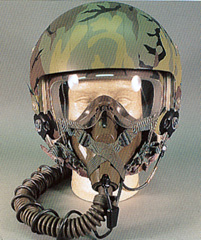 |
At the end of the 50's the HGU series introduced a new generation of flight helmets characterized by the external visor covered with a protective shield. Improvement of the communication system, internal liner and oxygen mask retainers was also made and in some versions the dual dark and transparent visors system was installed. These types of helmets were the USAF standard jet aircraft headgears during the 60's through the 70's. During the early 60's flight tests have been performed to verify the suitability of a full face "Clam Shell" helmet designed to eliminate the oxygen mask and to give better protection during ejection.
HGU-2A/P
The HGU-2A/P was introduced around 1961 as an improved version of the HGU-2/P. This helmet contains improved fitting pads that make the helmet more stable and an adjustable nape starp. The HGU-2A/P shell has three ventilation holes in the crown under the visor housing whose were manufactured from the factory only in the early configuration. The HGU-2A/P was utilized with MBU-5/P oxygen mask secured with straight T bayonets on relevant Helmet's receivers. Dual visors configuration of HGU-2A/P were also introduced both with one and three-pieces ramshorn housing assembly. |
|
| Early HGU-2A/P made by Sierra Engineering in 1962. Note the unusual six-lobe lock knob made excklusivelly by Sierra. (Bluelight) |
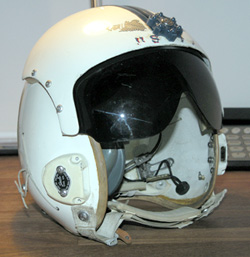
|
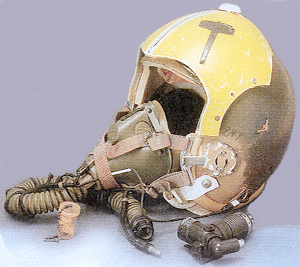
|
USAF HGU-2A/P with MBU-5/P oxygen mask. The helmet has the typical camuflage painting used in several USAF squadron during the Vietnam war. |
| USAF double visor HGU-2A/P and oxygen mask MBU-5/P. This hemet is configured with one piece ramshorn housing customized with two cut in the front edge to improve visibility. |
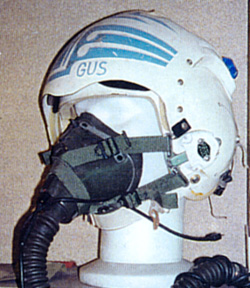
|
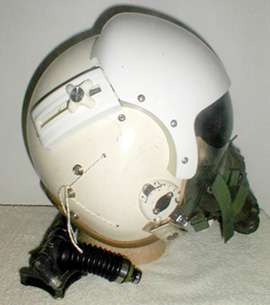
|
HGU-2A/P with Gentex' three-piece ramshorn visor assy and MBU-5/P oxygen mask. (Cretanman). |
| HGU-2A/P and oxygen mask MBU-5/P. This image is related to Col. Robin Olds in 1967 during his duty in Vietnam as commander of the 8th TFW . He flew more that 100 mission on the F-4 Phantom II knocking down 4 MIGs (two MIG 21 and two MIG 17) (USAF). |

|

|
USAF HGU-2A/P of the early 60s with MBU-3/P oxygen mask. |
| USAF HGU-2A/P and oxygen mask MBU-5/P of 442nd Fighter Wing (Chameloon). |
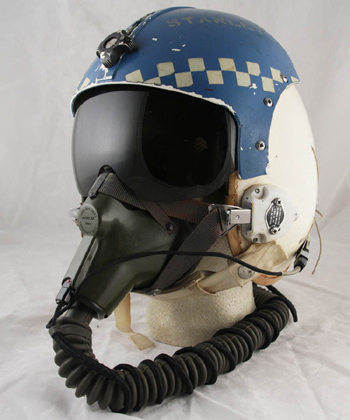
|
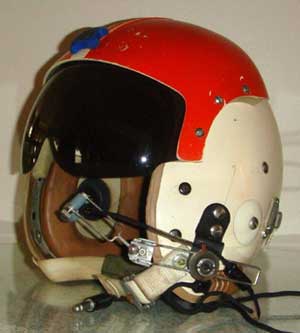
|

|
Very interesting HGU-2A/P custom fitted with APH-7 strap suspension assembly, APH-6 external plastic disks and boom microphone. |
| Beautiful HGU-2A/P custom fitted with MBU-5/P used by USAF F-4 Phantom pilot or WSO during the Viet-Nam war. |
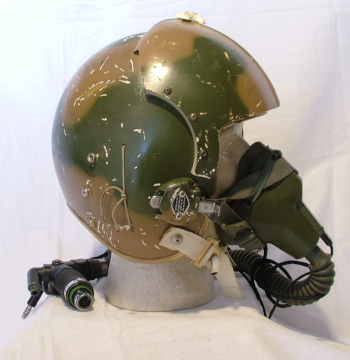
|
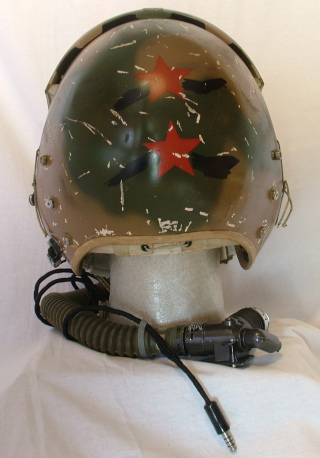
|
 |
Custom fit HGU-2A/P
In the middle 1970 a number of USAF pilots start to be equipped with custom fit HGU-2A/P based helmets procured from the supplier company like the Protection Inc. and Sierra, and applied on squadron level basis. These helmet based on modified HGU-22/P shell were normally updated with more confortable foam liner, new edgeroll and new visor cover. The holes previously required by the old headset fixation screw and adjustment drawstrings were not anymore used.
These helmets, whose can be considered a "transitional" customized models (similar to the ones used by the US NAVY which were based on APH-6 series) were utilized with the standard USAF MBU-5/P as well as the MBU-12/P. |
|
| USAF customized HGU-2A/P flight helmet from 426 TFS with MBU-12/P oxygen mask (Bluelight) |
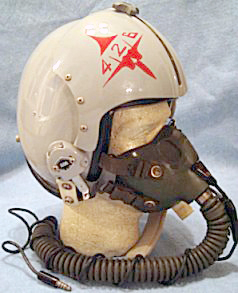
|

|
USAF thunderbirds flight demonstration team customized HGU-2A/P . The Thunderbirds used
this configuration before switching to the HGU-55/P with single visor
housing. (maty) |
| USAF customized HGU-2A/P flight helmet with dual visor configuration and MBU-5/P oxygen mask. |

|

|
USAF customized HGU-2A/P with MBU-5/P oxygen mask. The helmet shows a modified visor shield with two hand made curved cuts in order to get better upper visibility range (Boris Aguilar) |
| USAF customized HGU-2A/P flight helmet with "Christmas tree" bayonet receivers, MBU-5/P oxygen mask, external boom mounted microphone and modified visor shield. |
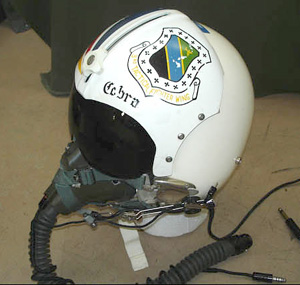
|

|
Another interesting USAF customized HGU-2A/P in the color of the 35th TFS. Also in this case the helmet shows a modified visor shield with two hand made curved cuts in order to get better upper visibility range. |
| USAF customized HGU-2A/P flight helmet by Protection Inc. dated 1971 and MBU-12/P oxygen mask. (CSARdude) |
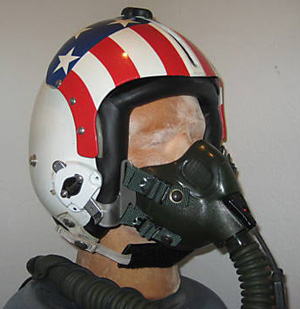
|
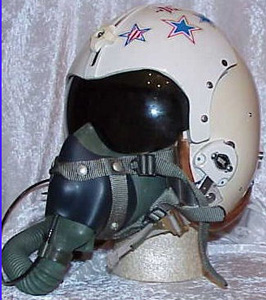
|
This is an unusual HGU-2A/P belonged to Lieutenant General Joseph Wilson. its customized configuration included an early hand-made custom fit liner and edgeroll and an MS22001 with J-bayonets. |
| USAF Agressor squadron HGU-2A/P custom fit with MBU -5/P oxygen mask. (Csardude) |
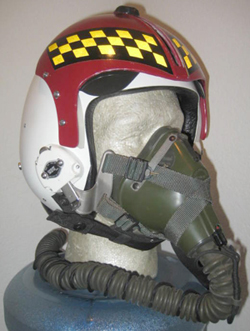
|
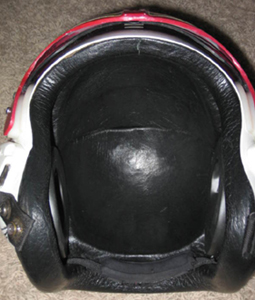
|

|

|
Customized HGU-2A/P flight helmet with dual visor configuration. On this helmet some ridiculous and fully fantasy/fake marking have been applied. |
| USAF Customized HGU-2A/P flight helmet of 563 TFS with dual visor Ram-horns configuration and visor cover trimmed for better upper visibility. (Csardude) |
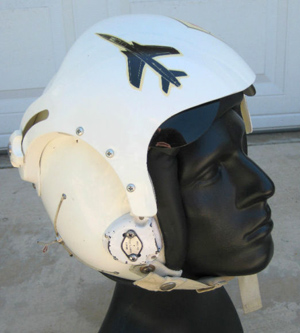
|
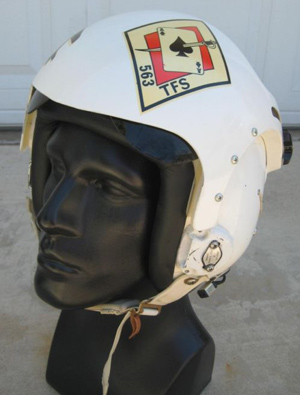
|

|
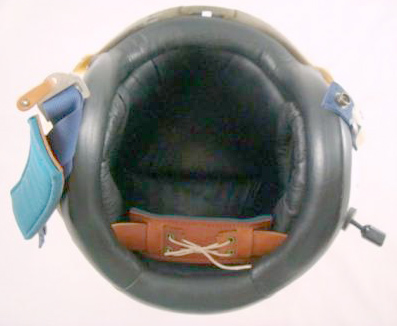
|
Another interesting Customized HGU-2A/P used by USAF Major General William E Overacker. |
| Sierra Customized HGU-2A/P flight helmet with dual visor Ram-horns configuration |
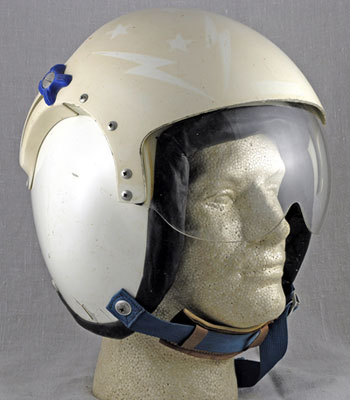
|
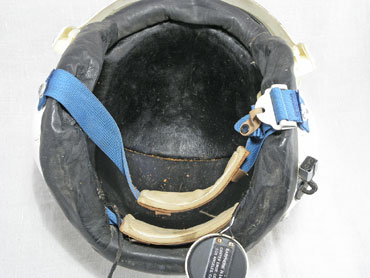
|

|
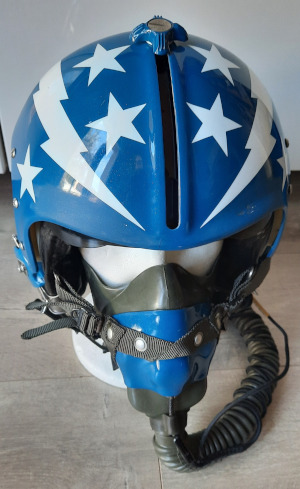
|
Beautiful Customized HGU-2A/P with oxygen mask MS22001. Note the mask shield painted in blue |
| USAF Customized HGU-2A/P flight helmet with early type of MBU-12/P of the second half of the 70s |
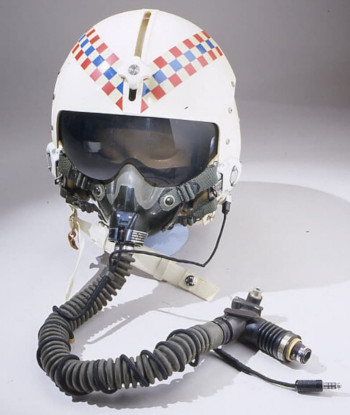
|
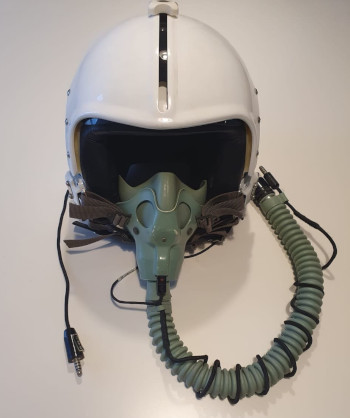
|

|
Beautiful Customized HGU-2A/P used by Mc Donnel Douglas test pilot with experimental oxygen mask MBU-7/P during the 70s (Andrea Fonzi collection) |
| USAF HGU-2A/P Protection Inc. custom helmet with MBU-5/P mask hard shell painted to match. The helmet has the rare PI visor visor cover. Puerto Rico ANG A-7 pilot 1982 |
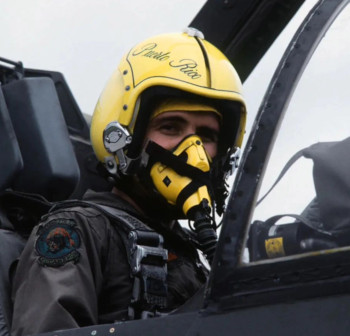
|
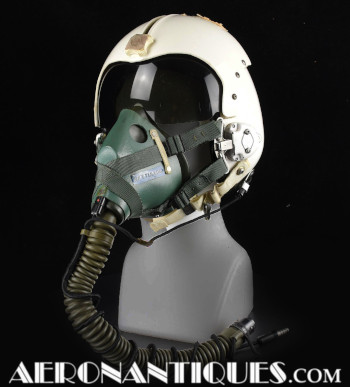
|
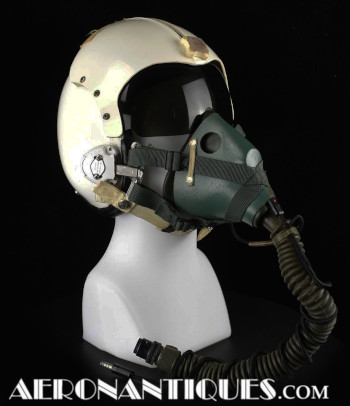
|
USAF Customfit HGU-2A/P and MBU-5/P with a personal customized hard shell (AERONANTIQUES.COM) |
VTAS Experimental helmet based on custom HGU-2A/P
A VTAS helmet was probably developed in the early 70s by Gentex based on custom fit HGU-2A/P shell. This experimental VTAS helmet was tested by USAF on F-106 during the early of the 70s, so in the same period of the US Navy VTAS I evaluation. |
|
| Unidentified Experimental USAF VTAS Helmet from a custom HGU-2A/P shell. |

|
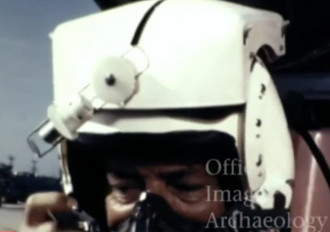
|
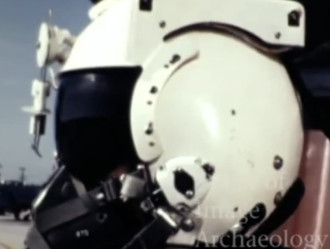
|
Other images of USAF F-106 pilot with an unidentified Experimental VTAS Helmet during the early of the 70s |
Unidentified Experimental Helmet
Unidentified Experimental Helmet probably developed in the early 70s by Gentex from a HGU-2A/P shell for the application of an early anti-flash google assembly like the later EEU-2/P |
|
| Unidentified Experimental Helmet from a HGU-2A/P shell. Note the four receivers applied on the shell. The ones in the upper location were probably used to fix a sort of anti-flash google assembly |
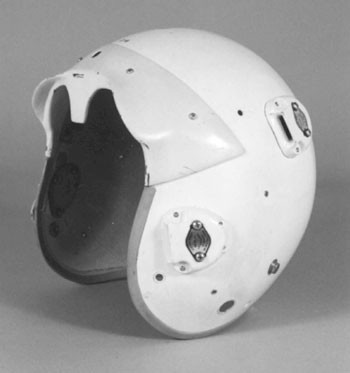
|
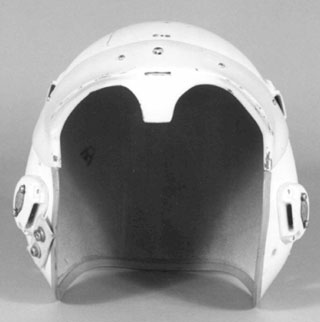
|
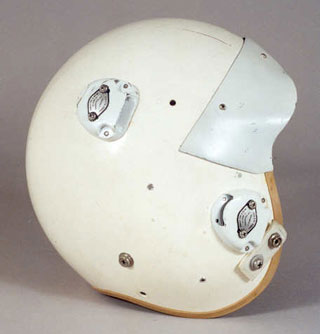
|
Unidentified Experimental Helmet probably developed from a HGU-2A/P shell for the application of an early anti-flash google assembly like the later EEU-2/P |
HGU-7/P
The HGU-7/P helmet standardized in 1959 and made by Land Manufacturing Inc. and Gentex Corporation, was used by crew members of F.A.C., cargo, trainer, tanker type aircraft and for a limited time on SAC bomber like the B-58. The helmet constructed of an injection molded polycarbonate material was equipped with boom mounted 11110 microphone, 256/A/C headset and removable sun bill. MBU-5/P oxygen mask and B-8 googles could also be used. |
|
| HGU-7/P with boom mounted microphone and removable sun bill. (Schiffer Publishing Ltd.) |
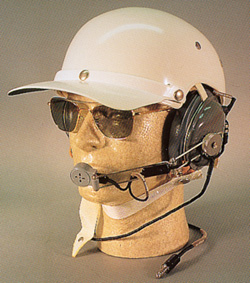
|
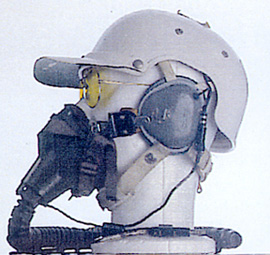
|
HGU-7/P flight helmet with oxygen mask MBU-5/P. |
| HGU-7/P with oxygen mask MBU-5/P. note the unusual type of sunglasses (Mike) |
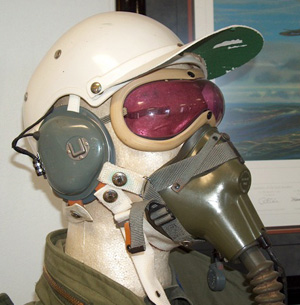
|
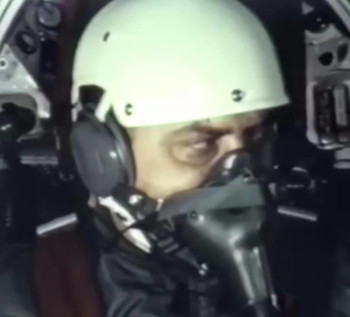
|
HGU-7/P flight helmet with oxygen mask MBU-5/P worn by SAC B-58 pilot (USAF). |
| Crew member of SAC B-58 with HGU-7/P during the middle of the 50s (USAF) |
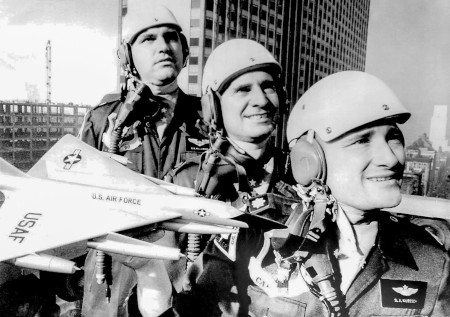
|
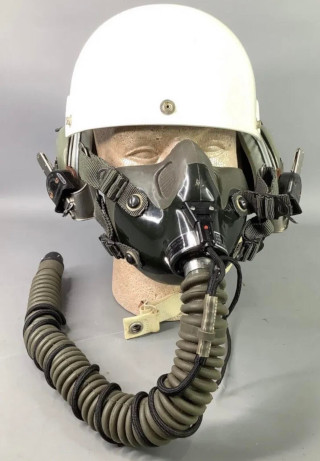
|
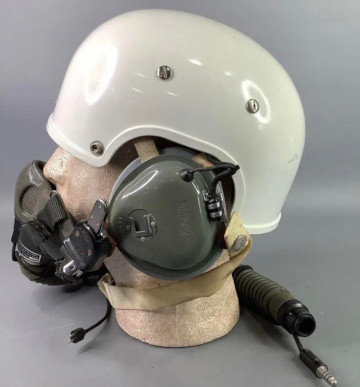
|
USAF HGU-7/P used during the late of the 70s with early type of MBU-12/P |
 |
HGU-9/P
The HGU-9/P based on Bill Jack Scientific Instrument Co. D-10 helmet is intened for use by crew of B-52, B-47 and B-58 USAF startegic bomber engaged in Airborne Alert Mission. The helmet is constructed of rigid fiberglass reinforced plastic shell, a suspension system consisting of a full foamrubber liner with resesses foe earphone. An adjustable nylon chin strap completes the helmet assembly. The HGU-9/P can use MBU-5/P or MBU-3/P oxygen masks attached on straight T bayonet receivers. The Nuclear flash bindness google can be attached on helmet' shell lateral snaps. Three additional snaps located on upper front of the shell can be also used for sun visor installation.
|
|
HGU-9/P with MBU-5/P oxygen mask.
(Flightgear On-Line) |

|
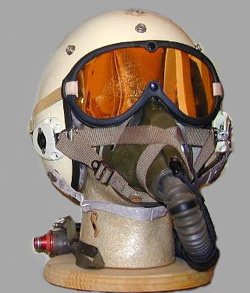
|
USAF HGU-9/P with MBU-5/P oxygen mask and Nuclear flash blindness goggle. |
| USAF HGU-9/P with MBU-5/P oxygen mask. |
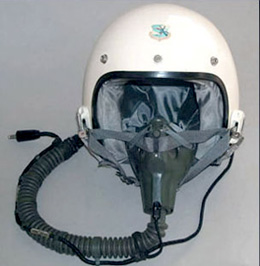
|

|
USAF HGU-9/P with MBU-5/P oxygen mask and upper sun visor. |
| HGU-9/P with Nuclear flash blindness goggle. |

|
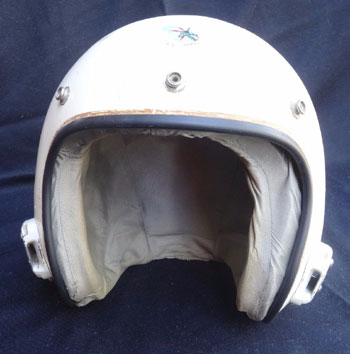
|
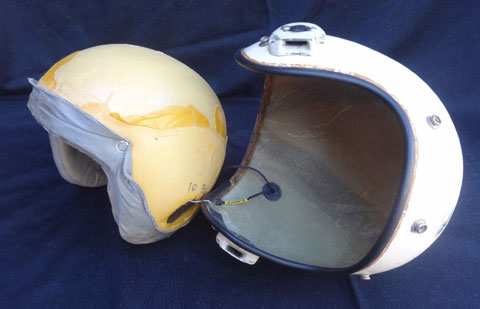
|
Interesting specimen of USAF (SAC) HUG-9/P shows internal liner configuration |
| Beautiful USAF (SAC) HUG-9/P with MBU-5/P oxygen mask (MM05 & KM06) |

|

|
Another beautiful specimen of USAF (SAC) HUG-9/P configured for "nuclear mission". Note the customized white cover on the oxygen mask hose (WWW.AERONANTIQUES.COM) |
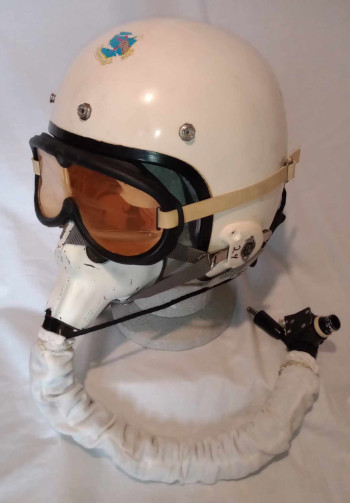
|
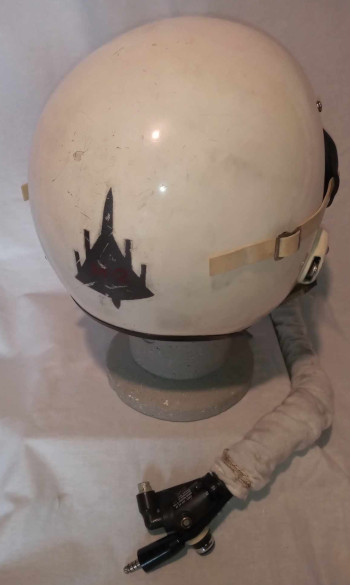
|
USAF (SAC) HUG-9/P with customized MBU-5/P from 305th B.W. on B-58 Hustler during the middle of the 60s. |
HGU-15/P
The USAF HGU-15/P was developed as an integrated oxygen breating and crash protective helmet. The helmet was flight tested during the 1963-64 on F-104 and F-105 fighters. Because of his excessive weight, restricted bilateral peripheral vision and the chin section snagging on chute harness capewells (while checking 6), the pilots considered this helmet not suitable for operative flight and high-G maneuvers. |
|
| HGU-15/P worn by General Dynamics test pilots in F-111 during the middle of 60s |
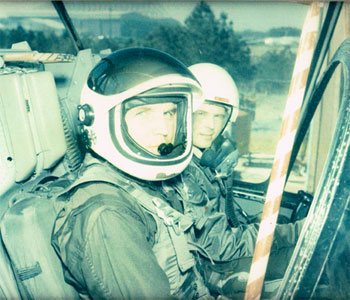
|
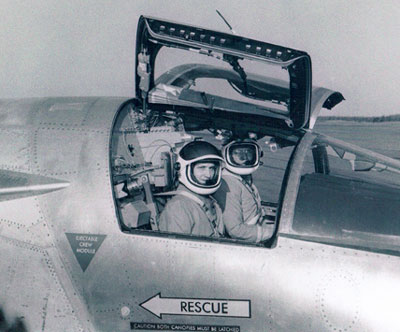
|
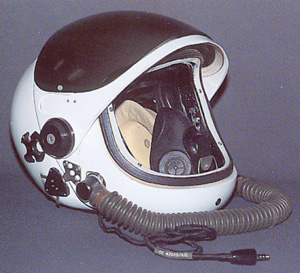
|

|
One of the 16 HGU-15/Ps modified for a 1971 study on helmets for use under chemical and biological warfare condition. (Schiffer publishing Ltd). |
HGU-26/P
The HGU-26/P introduced during the 70s is comprised of a basic helmet shell type HGU-22/P with chin and nape straps and either single or PRU-36/P dual visor assembly completelly installed, with standard communications system H-154A7AIC and pads/liner. The HGU-22/P shell is constructed of fiberglass cloth reinforced with epoxy resin. This typology of helmet was adopted to provide a standardized helmet configuration for use by aircrew personnel in all types of aircraft. The HGU-26/P was normally equipped with MBU-5/P and MBU-12/P oxygen masks secured on straight or offset bayonet receivers, but an M-87A/AIC boom mounted microphone may be installed on the left side of the helmet if an oxygen mask is not used. |
|
| Very early HGU-26/P with ram's horn visor housing made by Gentex and dated 1971 |
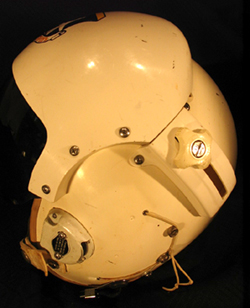
|
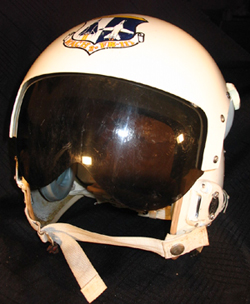
|

|
HGU-2A/P coverted in HGU-26/P dual visor standard. The helmet is shown with the oxygen mask MBU-7/P. |
| Single visor HGU-26/P with oxygen mask MBU-5/P. (The flight helmet site) |
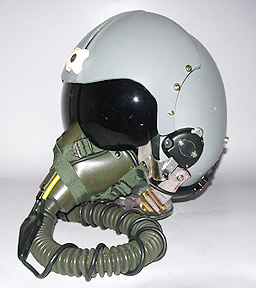
|
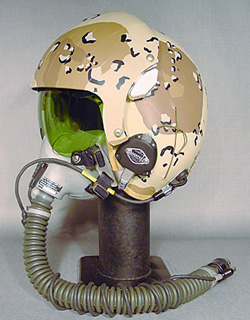
|
HGU-26/P dual visor covered with desert camuflage tape equipped with an MBU-12/P oxygen mask.
(The flight helmet site) |
| Double visor HGU-26/P. Note the metallic reinforcement on the sides of the visor housing. (Bluelight) |

|
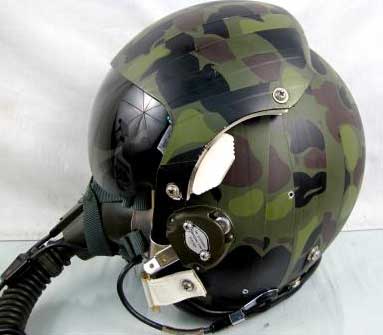
|
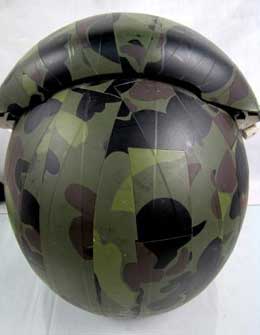
|
USAF HGU-26/P the early 70s with unusual "duck hunter" camuflage tape and oxygen mask MBU-5/P. |
| USAF HGU-26/P of 1st TRS of the early 80s with wooland camuflage tape and oxygen mask MBU-5/P. |
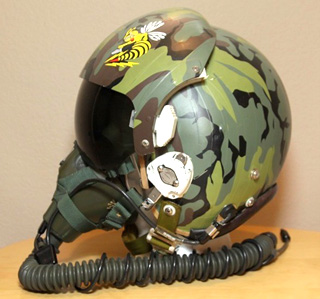
|
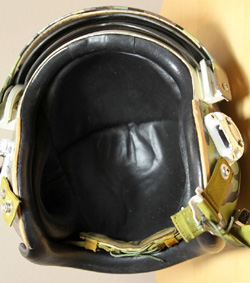
|
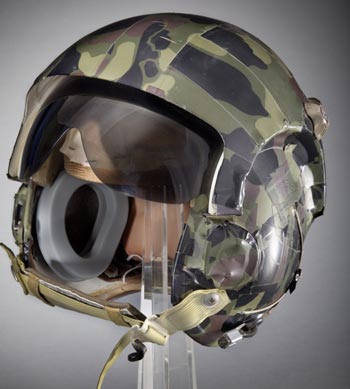
|

|
USAF HGU-26/P with with ram's horn visor also covered with "duck hunter" tape displayed at Smithsonian National Aviation Museum. |
| Single visor HGU-26/P with wooland camuflage tape and oxygen mask MBU-5/P. Note the velcro elements on visor knob and upper part of the housing placed to avoid potential scrathes on the glass canopy. |
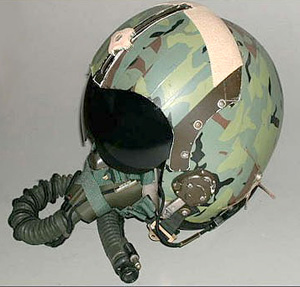
|
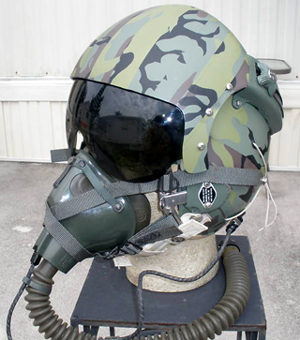
|
USAF HGU-26/P with with ram's horn visor housing made by Gentex with wooland camuflage tape and oxygem mask MBU-5/P. |
| HGU 26/P of USAF Strategic Air Command equipped with EEU-2A/P nuclear flash protection googles . |
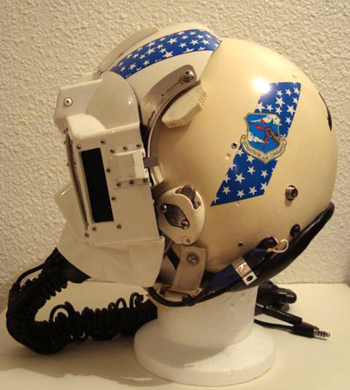
|

|
Even if at first sight this helmet seems to be an HGU-55/P, it is instead a converted HGU-26/P fitted with HGU-55/P parts. These transitional helmets were used by some pilots before the HGU-55/P was distributed in numbers. The helmet in the picture was used by C-130 crew. |
| USAF HGU 26/P customized with "Top Tex style" internal pads and MBU-9/P from Edwards AFB test squadron during the early of the 70s . |
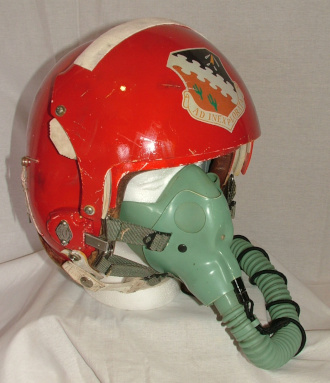
|
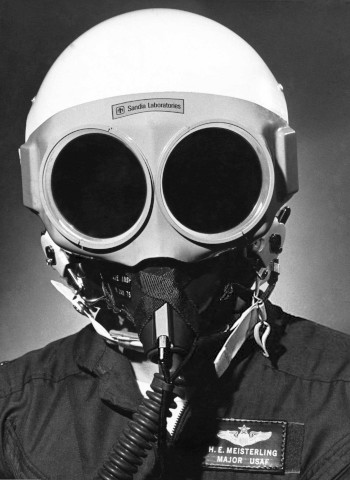
|
USAF HGU-26/P with experimental nuclear flash protection googles produced by Sandia Laboratoried during the 70s. |
| USAF HGU-26/P used on F-4 Phantom II with MBU-5/P oxygen mask customized with a blue shell. The helmet was used by a pilot of the 32nd TFS at Soesterberg AFB during the late of the 70s. The Mask was not used with this helmet but it comes from the 2nd FIS/TFS. |
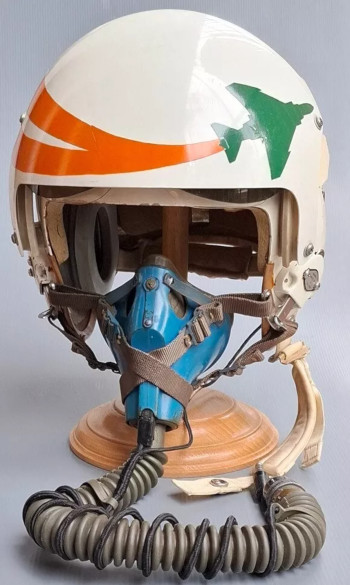
|

|
 |
HGU-26/P DASH
Display and Sight Helmet (DASH) enables pilots to aim their weapons simply by looking at the target. DASH measures the pilot's Line of Sight (LOS) relative to the aircraft, and transfers this information to other aircraft systems.
Aircraft sensors, avionics and weapons are thus enslaved to the target.
DASH is adaptable to any fighter/attack aircraft and will accommodate advanced missiles and smart weapon lock-on envelopes.
The early DASH Generation helmet was based on HGU-26/P helmet modified with the special visor cover. Developed in the late 70s - early 80s by Israelian company Elbit this helmet was also tested by US Air Force but never used operationally.
The DASH I and the further devepment DASH generation III and IV are used by Israel and several Air force in aircrafts like the F-5, F-15, F-16 and MIG-21.
|
|
| HGU-26/P based DASH helmet with experimental visor cover used during Air Force testing on helmet-mounted display early experiment. |
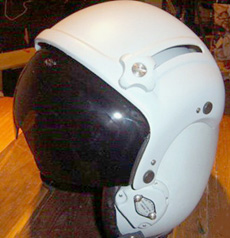
|
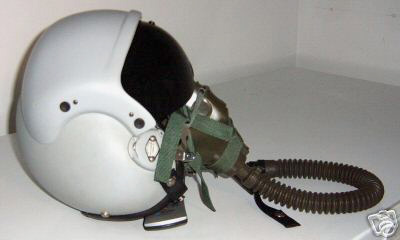
|
Early DASH helmet tested by USAF in the late 70s with MBU-5/P oxygen mask. |
| Gentex and Elbit System Ltd. DASH helmet with MBU-5/P used for flight test by USAF during the early 80s. |
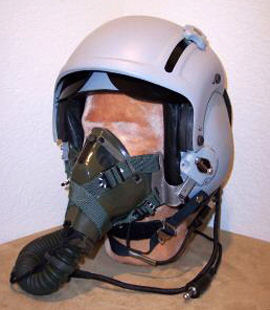
|
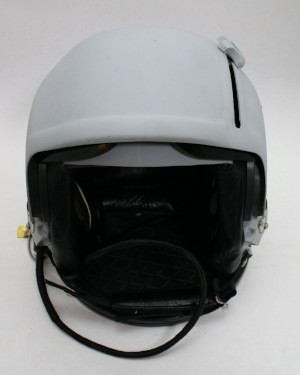
|

|
Gentex and Elbit System Ltd. DASH helmet.
|
AN/PAR-6 L.A.D.
The purpose of the AN/PAR-6 Laser Acquisition Device (L.A.D.) Helmet is to give the pilot the location of a ground target that is being illuminated by a laser designator. This is done by detecting the laser energy return for the illuminated direction of the target. By mounting the detector, optical system and display on the pilot's helmet, targets may be sighted over a large viewing area.
|
|
| The USAF experimental helmet AN/PAR-6 L.A.D. displayed at the National Museum of the USAF (USAF) |

|
 |
Sierra Lightweight Helmet (LWH)
The Light Weight Helmet (LWH) was designed by Sierra Engineering Co. as a new candidate helmet for reducing the stress and strain on the neck of the aircrew members exposed to sustained high level of positive acceleration. In addition to reduced weight, the helmet also incorporates low profile, minimum bulk, improved peripheral vision, an integrated chin/nape strap, and reduced aerodynamic lift.
The helmet shell was fabricated from an epoxy resin reinforced with Kevlar aramid cloth.
The silhouette, or width, was reduced by flattering the sides of the shell and the trim-lane was changed to provide increased peripheral vision to the user.
To his end the visor housing was equipped with multiple integral spoilers, which deflect the incoming frontal flow upward causing the helmet to press down onto the head.
The rear side of the spoilers has an opening that allows the ram air scooped up by the opening between helmet visor and visor-housing to escape through the vents.
A rapid action knob was also designed to permit instant locking or unlocking of the visor lens.
The cast metal housing of the oxygen mask receivers was eliminated and its protective function was taken over by extending the visor housing downward over the actual retention mechanism.
Sierra provided 20 helmets for flight test.
These helmets were flown in both F-5 and F-15 aircraft
|
|
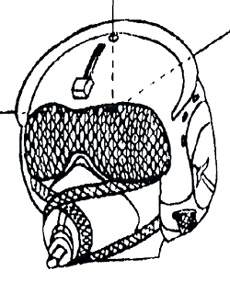
|
The sierra LWH to the end of visor housing was equipped with multiple integral spoiler which deflect the frontal flow during ejection. |
 |
Sierra Experimental "Anti-lift" Helmet
This was another experimental helmet designed to reduced aerodynamic lift. It was designed by James H Ryder, David C Brown and Johannes A (Tony) Van Haastert of the Sierra Engineering Company for the USAF. This helmet is a prototype patented (4075714 Feb 28th 1978).
The helmet incorporates a visor cover that has "bumps" designed to disrupt the flow of air over the helmet to eliminate undesirable lift. Another feature is the smooth or fly flat contour on the sides of the helmet.
The oxygen mask receivers are present and located under an extension of the visor cover similar to German examples of the HGU-26/P. The helmet has a very unique visor locking mechanism.
The helmet has a AN/AIC-10 headset with H-143/AIC earphones and wiring. The earcups are also quite interesting as they are completely "soft" and malleable and the ear seals are different than those found on a conventional helmet.
The helmet is equipped with a two piece custom fit liner and utilizes an integrated chin and nape strap. This helmet was probaly tested during the late 70s in Brooks Air Force base which was closed in the early 90s. This helmet was intended to be used with the MBU-5/P standard USAF oxygen mask.
|
|
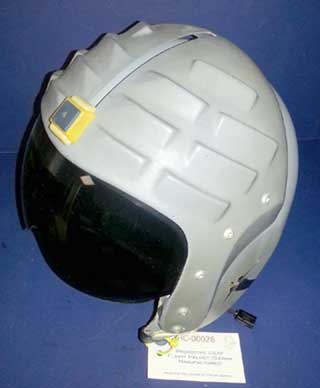
|
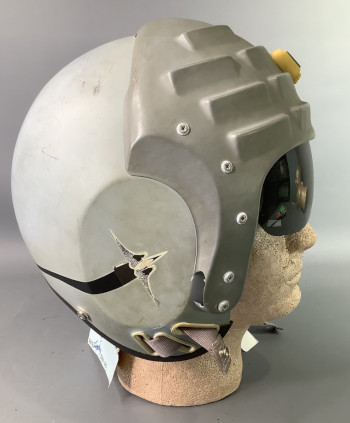
|
Sierra experimental "Anti-lift" flight helmet tested during the late 70s. Note the unique visor cover designed to disrupt the flow of air over the helmet to eliminate undesirable lift and the smooth or fly flat contour on the sides of the helmet. |
The earcups are also quite interesting as they are completely "soft" and malleable. Also the ear seals appear to be different than those found on a conventional helmet.
|
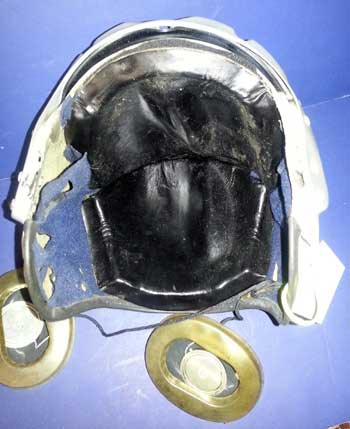
|
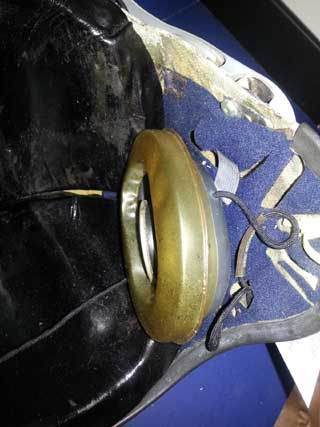
|

|
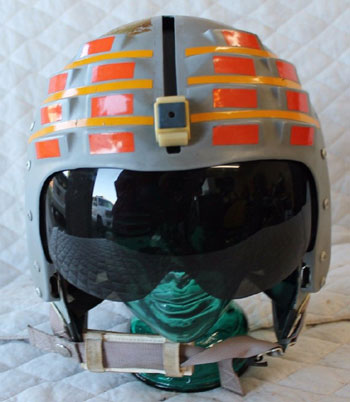
|
Another interesting Sierra experimental "Anti-lift" flight helmet. This specimen seems to be test by US Navy even if the autenticity of the decorations applied on the helmet is questionable. |
Sierra "Anti-Lift" helmet used for test used for evaluation and test during the 70s.
|
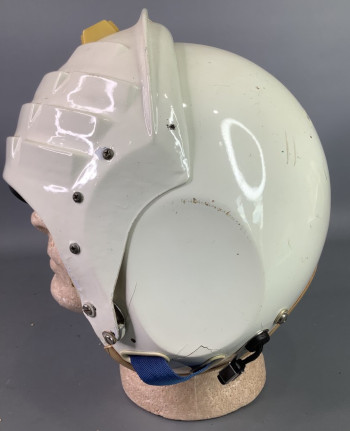
|
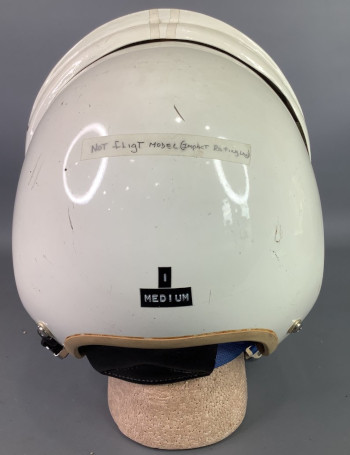
|
HGU-35/P
The HGU-35/P manufactured by Gentex for U.S.A.F. was a lightweight and advanced version of the US NAVY HGU-35/P designed with an integrated oxygen system. This version of HGU-35/P was equiped with locking rotatory visor system. The HGU-35/P never put into mass production.
|
|
| Gentex HGU-35/P developed for US Air force was a lighweight and advanced version of the USN HGU-35/P. (Gentex) |
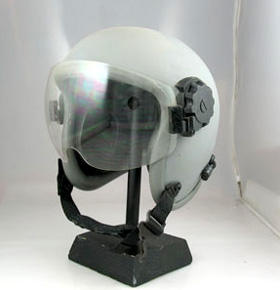
|
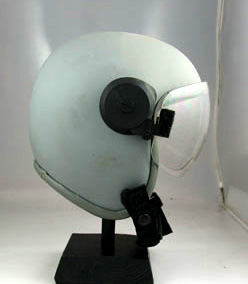
|
U.S.A.F. variant of Gentex of HGU-35/P with locking rotartory visor. (Gentex) |
 |
HGU-36/P
The HGU-36/P manufactured by Gentex was standardized in 1974, it has a balistic shell but shaped like the HGU-26/P with black rubber edge bead. The internal liner is the black styrofoam liner similar to the one used with TPL in the HGU-55/P but the HGU-36/P uses sizing pads black leather. No thick leather edge roll is present, the helmet was designed for use with MBU-5/P and MBU-12/P oxygen mask secured on standard oxygen mask retainers, boom mounted microphone can be used as well. The HGU-36/P was Probably developed for C-130 Gunship crew as they would have a requirement for balistic protection.
|
|
| USAF HGU-36/P balistic shell flight helmet with external boom mounted microphone and oxygen mask receivers. |
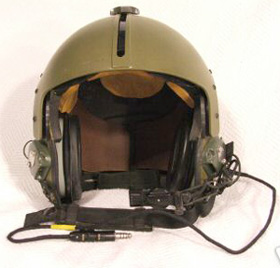
|
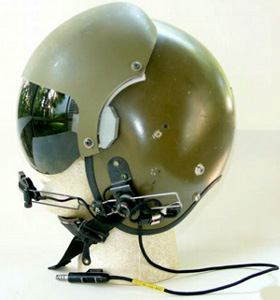
|
USAF HGU-36A/P dual visor variant dated 1974. The HGU-36/P was developed for USAF Special Operations. (Tomcatchucky) |
 |
HGU-39/P
The HGU-39/P is a chemical, biological, oxygen helmet and mask used in the 1980s. The basis of the HGU-39/P is an SPH-4 helmet without the visor cover. Cast aluminum oxygen mask receivers and Air Force communication components complete the basic helmet. A chemical hood can also be laced over the helmet and mask. |
|
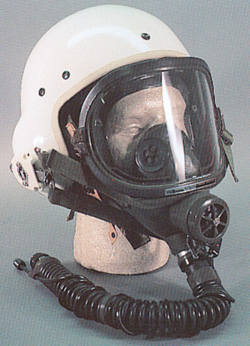
|
HGU-39/P chemical, biological flight helmet.
(Schiffer publishing Ltd) |
| HGU-39/P with chemical hood placed over the helmet and mask. (Schiffer publishing Ltd) |
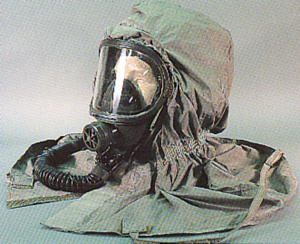
|
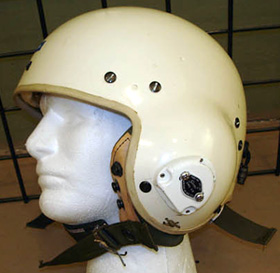
|
HGU-39/P chemical, biological flight helmet, based on SPH-4 shell without the visor cover with additional cast aluminum oxygen mask receivers.
|
| HGU-39/P internal mask general arrangment of the fixation straps. |

|
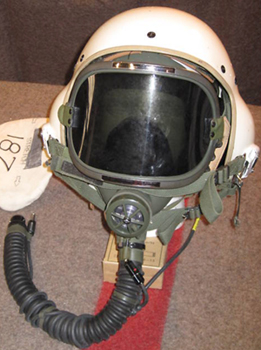
|
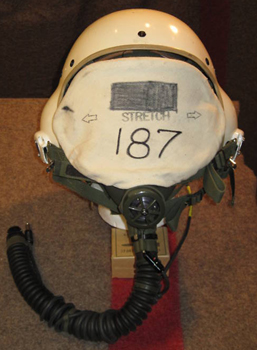
|
USAF HGU-39/P with dark visor and relevant visor protective cover. |
| HGU-39/P with chemical-biological filter. |
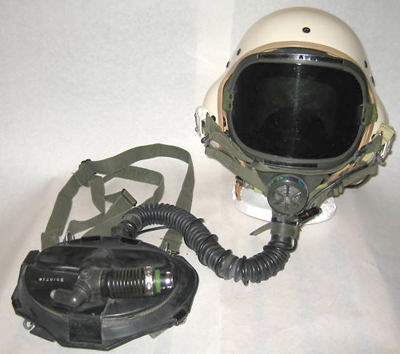
|

|
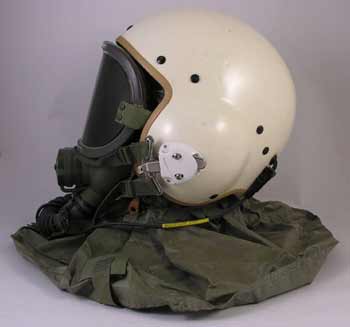
|
USAF HGU-39/P with dark visor relevant rigid shell placed over the hood.(Bellsaviation.com) |
HGU-40/P
The HGU-40/P flight helmet appears to be an upgrated version of the MB-3 with new AN/AIC-10 compatible headset, formfit liner, snaps attached bungee visor and lightweight bayonet receivers.
|
|
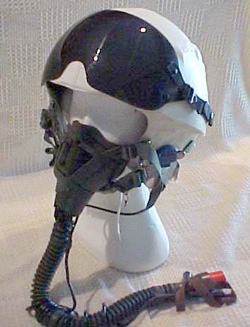
|
HGU-40/P with MBU-5/P oxygen mask.
(Howard Jones) |
| HGU-40/P flight helmet. Note the internal formfit liner the chin strap and the lighweight oxygen mask receivers. (Howard Jones) |
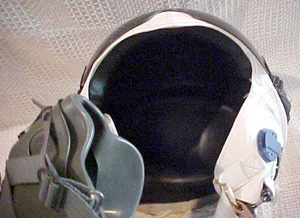
|
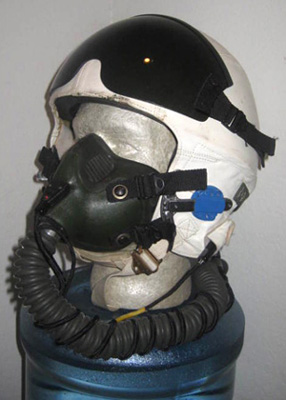
|
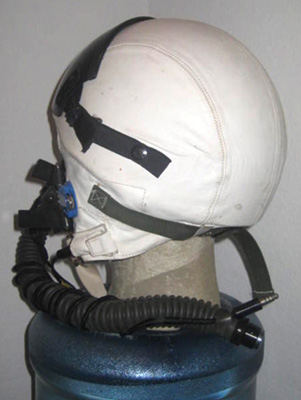
|
USAF HGU-40/P with MBU-12/P. This helmet was designed to be used during the long duration mission on the Strategic Bombers like the B-52. (Csardude) |
| USAF HGU-40/P with clear visor. The external cloth cover was attached with velcroes on the formfit liner. |
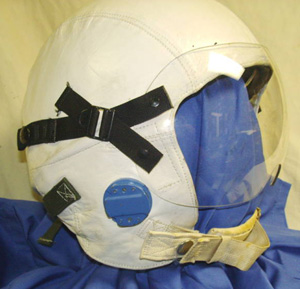
|
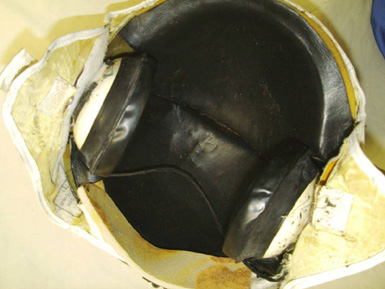
|
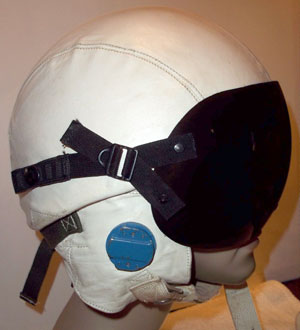
|
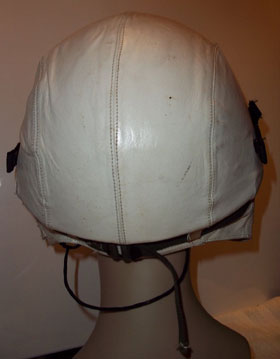
|
Another beautiful specimen of USAF HGU-40/P of the early 80s. |
|



























































































































